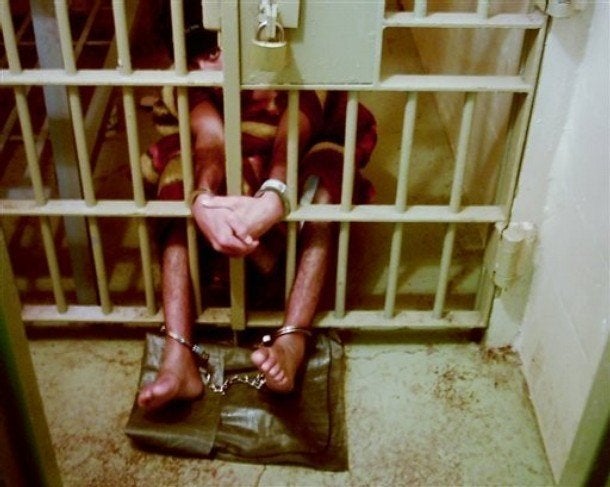
Since President Obama approved the release of the torture memos, conservatives have jump-started their efforts to make the case that torture works. The testimony of everyone from historians to FBI agents aside, what if there's a germ of truth to what they allege?
Thomas Hilde, editor of On Torture (Johns Hopkins University Press, 2008) explains in an email (excerpted here with permission) the method -- seldom cited -- to the madness of modern torture. [Emphasis added.]
. . .torturing for information. . . requires as much torture as possible in order to make it meaningful information rather than simply raw data. Often, as with the Burmese junta, this just means hauling in people. . . with little or no reason for suspicion. . . torturing them all, and then plotting out the various individual bits of data to create a larger, meaningful narrative while tossing away the outlying data (from the insane, people who know little if anything, from the moments of a victim's sheer delirium, etc.).
To update an analogy from a different context (from the great 19th-century philosopher, Charles Peirce). . . we can know with some degree of certainty that the goal of an archer or pub darts player was to hit the bulls-eye without him actually ever hitting it. But only if we have enough other data points from which to extrapolate. Three darts -- say, off the board, in the inner ring, an inch above the bullseye -- don't tell us much. The true goal -- the bullseye -- would be revealed in the pattern left by, say, 183 darts, even if all of them miss the bulls-eye.
Same goes for information when the means of getting it make its veracity seriously suspect (i.e., torture victims will say anything). The more individual data points, the clearer the picture. More torture victims, better information. This is also why torture always tends towards institutionalization.
I think we should be very careful of focusing too much on the individual cases in trying to analyze the policy precisely because torture institutionalizes. But in the cases of KSM and Zubaydah, the ongoing torture may function in a similar way. ... [My] guess is that they were trying to verify little bits of information gotten from him in other torture sessions or from other torture victims by trying to beat his mind into a malleable pulp.
It's not that torturing for information doesn't "work." It's that we've misunderstood the nature of torturing for information. I think that's what Cheney is probably relying on if he is indeed saying that all the torture memos ought to be released because many will show that the torture "worked."
In other words, volume, volume, volume -- like, like. . . warrantless surveillance! In both practices, the extravagant expenditure of time and money required to mine wave upon wave of data suggests a regime less concerned about threats to the state than to itself.
The obsessive pursuit of information has traditionally been the mark of a regime that rules by force and sees enemies at every turn -- like the Bush administration to a certain extent. If we wish to wipe that slate clean, we can scarcely grant the offending parties a free pass.
Addendum
Nor should we forget, as Professor Hilde reminds us, that the meaningfulness of the information extracted:
. . . is a function of fitting into the preexisting expectations and interpretive frameworks of the torturers. Factual verification may never be possible in many cases. Meaningfulness and factualness are not one and the same thing.